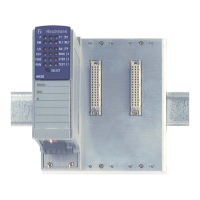Redundancy
192
7.5
Spanning Tree
RM Web
Release
6.0
07/2010
7.5.2 MSTP (Multiple Spanning Tree)
With this dialog you can:
X manage the global Multiple Spanning Tree Instance
X create or delete a Multiple Spanning Tree Instance
X assign VLANs to a Multiple Spanning Tree Instance and manage the
MSTI.
The tab for the global Multiple Spanning Tree Instance is named “MST Global
(CIST)”. This instance is always available and cannot be deleted. It contains
all the configured VLANs that are not explicitly assigned to an MSTI. The
settings include the MST region identifier, the maximum number of Hops for
the IST, and information on IST and CST (known in combination as CIST).
The tabs for the MSTIs are named MSTI, followed by the number of the
instance, e.g. “MSTI 2”. Here you can manage the individual Multiple
Spanning Tree Instances (MSTIs). The device allows you to create up to 16
Multiple Spanning Tree Instances (MSTIs). The prerequisite for using MSTP
is that all the bridges in the network that make up an MSTP region must also
support MSTP.
Note: Exclude the combination of MSTP with the following redundancy
procedures and settings at the same ports:
X MRP-Ring
X Sub-Ring
X Network/Ring coupling
X VLAN 0 Transparent Mode
X PROFINET IO
1
For details of how you can configure this exclusion with maximum protocol
inter-operability (see on page 198 “Port“).
Note: When combining MSTP with the management VLAN 0, note the
following restriction: the DHCP client of the device only sends its DHCP
Broadcasts in VLAN 1.
1. PROFINET IO requires the VLAN 0 Transparent mode.
